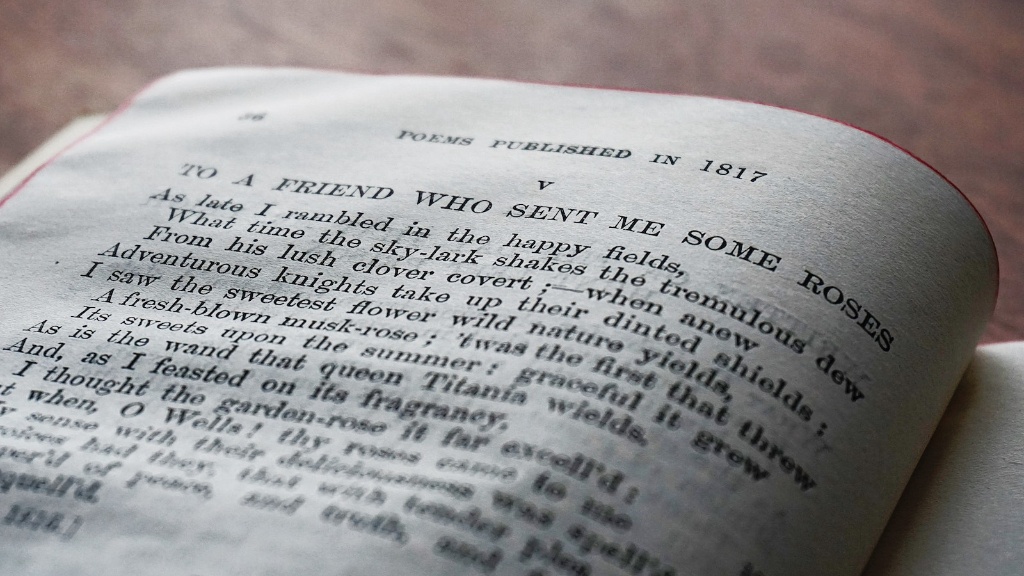Overview of pastoral poetry
Pastoral poetry is a genre of literature first debated by classical scholars during the Renaissance. It draws inspiration from classical and biblical works and tells stories about the joys and sorrows of country and shepherd life. The genre contains a broad range of topics, ranging from the pleasures of living in natural surroundings to the effects of disrupted peace and serenity. At its core, pastoral poetry celebrates an idealised rural life and true beauty of nature.
Pastoral poetry in classic literature
It is often believed that the roots of pastoral poetry can be traced back to the works of the Greek poet Theocritus. He wrote his Idylls, which were short, simple poems about suckling lambs, isolated shepherds, and the joys of rural life. Although Theocritus did not term his works as pastoral poems, they established a major component of this classical genre. Moreover, several other ancient Greek and Roman authors, including Virgil in his epic poem The Aeneid, also utilised pastoral elements when describing nature and rural life.
While the genre was mostly forgotten for many centuries, it was revived during the Renaissance with poets such as Edmund Spenser and Philip Sidney. These poets expanded upon the works of the ancients, injecting their own interpretations of pastoral life into their works. They heavily relied upon nature and celebrated birds, shepherds, and country life, thus becoming the forerunners of modern pastoral poetry.
Main themes of pastoral poetry
In general, pastoral poetry celebrates the rural countryside, its beauty and serenity. It is also used to express nostalgia and convey the affects of disrupted harmony and joy. At its heart, the genre embraces the simple pleasures of an uncomplicated life and the beauty of Nature, showing that the simple joys of rural life are the true source of joy and solace.
Specific themes vary depending on the specific poem and its author. Some topics created by authors include idyllic images, the honest love of a shepherd, romantic fantasies, idealised pastoral life and its hardships, compassion for rural suffering, loneliness of shepherds and country life, nature as a source of shelter and peace and the conservation of country life.
Famous examples and use today
John Milton’s “L’Allegro,” William Blake’s “The Shepherd,” and Robert Burns’ “To a Mouse” are lauded examples of pastoral poetry. In addition, modern poets, such as Alfred Lord Tennyson, have infused the genre with a unique perspective and insights. Moreover, the genre of pastoral poetry remains popular today as these works of literature continue to appeal to readers. This is especially true of works like “Song of a Thrush” by William Wordsworth, and Lamarck’s “The Latest News from the Country” which highlight the genuine beauty of country life.
Analysis of modern pastoral poetry
These days pastoral poetry is usually written with a hint of nostalgia and to remind readers of an idyllic rural setting or simpler times. The poem’s small details and descriptive passages rely heavily on Nature and its significance. Thus, through these works, modern poets can express their sentiments, ideas and observations on nature.
Additionally, works like Alice Oswald’s “Dart”, infuse pastoral poetry with a harsher, more contemporary effect. While the poem is referencing rural life, it also speaks to a modern audience by reflecting on the impact of humans on the environment and nature. By blending this message of nature conservation with traditional pastoral poetry, Oswald has crafted an exceptional work of modern art.
The soul of pastoral poetry
At its heart, pastoral poetry reflects the human soul and speaks to readers from all walks of life. While the genre mainly speaks of the beauty of country life and our love for Nature, each work also discusses the true role of rural life and its positive impact on society as a whole.
In its purest form, pastoral poetry relies on readers to step away from their busy everyday lives and appreciate the beauty of nature. Most importantly, these works remind us of our physical and tangible connections to the environment and its importance in the larger scope of things.
Conclusion of classical and traditional works
Classical writers, such as Virgil, and traditional poets, such as Tennyson, were integral in defining pastoral poetry and elevating it to its current form. Not only did they focus on Nature, but they also discussed the effects of disruption and the need to appreciate rural life and its conservation. This allowed later generations of authors to create new interpretations of this classical genre and engage with topics, such as environmental conscientiousness.
Limitations of pastoral poetry
However, there are certain limitations to this genre. For example, pastoral poetry typically focuses on a single individual or small group of rural characters, and does not necessarily reflect a broader social scope. Additionally, when considering the use of Nature as a source of solace, certain types of new verse lack the intensity of classical pastoral writings.
Development of modern pastoral poetry
Modern authors are trying to introduce variations to the genre and move away from the typical pastoral imagery. While these works may still reference rural life and Nature, they also provide us with new interpretations. Furthermore, they provide insight on the progress of humankind and its effects. In addition, these works are also becoming increasingly modern in their language, references and raw emotions.
The development of pastoral poetry has also been intrinsically tied to the rise of social media. Platforms like Twitter, Instagram and Facebook provide us with a vast source of modern-day perspectives of rural life. Poets and authors alike can share their works and receive feedback instantaneously, leading to new and exciting interpretations of the genre. This type of platform also permits poets to discuss pressing issues, such as environmental sustainability.
Implications of pastoral poetry
Pastoral poetry has shaped our understanding of Nature, God, and country life. Whilst it intensified our appreciation and connection to rural life, it also speaks to us about conservation and our place in the world. Through this genre, we can also gain an understanding of our collective past and the role of Nature on our lives.
Resurgence of pastoral poetry genres
With modern authors taking traditional concepts of pastoral poetry and rethinking them through a contemporary and global lens, it is not surprising that the genre has experienced a resurgence. As authors and readers alike continue to find inspiration in the tones and messages of this classical form, works of pastoral poetry will continue to be appreciated and interpreted in contemporary culture.




